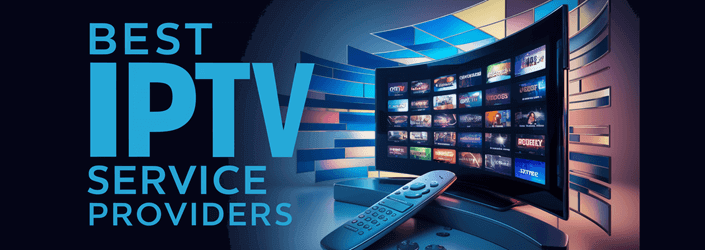(Sorry for long reads, used quotes for segmentation, rather than 5 messages one after the other)
What is this fascination with XML? It seems so grossly inefficient.
The supposed thing about XML, is that it can describe the un-describable ... or they make it seem.
ie. you or I look at a box, we know it by looks, and how do we explain that in HTML .. you can't really ... but in XML if there was no "box property" supposedly you could create a series of XML tags with description lines to capture enough for some XML Parser to re-create the item..
http://www.codeproject.com/KB/XML/XML_lets_you.aspx
Scroll down just a little to the "
What makes XML so hot" through the first sentence or two under "
Technology" (its all of about 4 paragraphs - very light/quick read)
really good explanation there ... though I would agree because it goes into detail about each item (ie, like the tag above "CanStreamOnLan") it becomes wasteful in some situations ... without all the XML tags, you could have a much shorter stream of just configuration data, separated by comma's or some other character, and what starts as a 10k XML could be whittled down to 500 bytes of just data.
DO and Android have not worked cor at least a month. 722 always shows off line but is not. Never had a problem using DRA pc or android to set recordings. Seems as if problems began after the SA came out.....
But that could be, because of the nature of DRA & Android's hook into the Satellite background. Before the broadband link was more fully developed, and I believe they are still keeping this technology around, when you set your timers ... it would go up through the uplink and down into your receiver via satellite link. You're only allowed X numbers per half or full hour ... try setting like 10 or 11 timers in short succession, the website should come back and tell you "you're only allowed X per hour".
That limit goes away when DO/DRA are able to communicate in a two way fashion directly with the receiver.
This part is on the Ports/Ip's and Connection issue (especially Scott / BMcCormi_99)
Interesting discussion folks. I too have had various problems similar to these recently. The new sling adapter works fine every time. The sling box has issues with Dish Online and most of the time I can not access the DVR (same problem with IPhone app). Although it works through slingbox.com and the link provided above in this thread (old dish remote access link). However, Scott, when you posted your settings: <devicePort>5003</devicePort> it caused me to check something. (network experts - excuse any terms I butcher, I am a little knowledgeable here, but may make an expert cringe - bear with me). In my wireless security for the linksys router, there are ports which are opened up for specific applications. There is an entry in mine for "sling box" - 5001. So, I changed it to 5001 - 5003. My dish online is now working! (iphone app also).
However, the sling adapter stopped working (appears offline to the DVR tab). I went back into the application security settings for the router and noticed that the sling box entry was for 192.168.1.110, so I added another one for 192.168.1.109 with 5001-5003 opened - and now the sling adapter is working.
Granted - I didn't test it out thoroughly, but am happy to see both receivers (one sling box one sling adapter) now being recognized.
I also know that these addresses within my network are dynamically assigned - so they won't always be .109 and .110 (after a power outage, router reset for example) - perhaps someone can addon here - but right now this now appears to be working.
I've spent weeks (on and off) playing with this - reported it to dish (known issue, sending it to engineering, etc.). But perhaps what was started here, and this experiment, will help someone more knowledgeable "see" wtf is going on.
Thanks,
Bill
and the grandaddy in quotes...
Several topics ... GLAD that you saw the 5003 and that it triggered your internal "port forwarding" clock/counter.. Normally the sling adapters are 5101 / 5102 and I would expect if I had a third adapter it would come up as 5103. People who have been on SlingBoxes may have other ports, because of the mixture of ports used and or suggested for configuration.
5101/5102 that's coming from the software that loads for the adapters via UPnP. When slingbox has you go through their configuration, if *it* can't open the ports for you, the instructions they give are the 500x series.
And ofcourse the *core* failure in those cases (where it doesn't work automagically) is that UPnP doesn't or didn't always work well. Its been the bane of XBox & PS3 players nightmares for some time. If you traced the issue back through Dish/Sling's history, its probably the source of the DN Tech saying "you need a new router" etc..
And is also why one of my strongest recommendations, is to use Static IP ... since it seems Dish hasn't gotten this clue and allowed us users to do it on the box, we end up having to rely on our home routers to do that via Static DHCP.
Using Static DHCP and preferably outside the normal range of DHCP ... most routers default to 25 or 50 ip's from like 192.168.1.100 ~ 192.168.1.149 for "DHCP" clients ... somewhere there would be the option to manually set IP's for a device MAC address (you see the mac's in the broadband connection screens) and when you'd set them, set them for something outside that 100 ~ 149 range.. I like Top Down ... so I'd go 192.168.1.249 for Dish Receiver 1, 192.168.1.248 for dish receiver 2, etc.. And though outside the range the router shows for "DHCP" .. the same DHCP server hands them out because it matches MAC's.
I would bet there would be
some SOHO router that might complain, and if it does so (ie. that ip is out of range), then again start from the top and go down, if the range is 192.168.1.100~.149 .. then give .149 to your first dish receiver, .148 to the second and so on. When regular laptops, and other wireless devices come into your wireless network, your DHCP server will default to starting at the *
bottom* of the list, so it will first hand out .100, then .101, and .102 ... to those wireless devices, and unless you actually had 50 items in your network at once, there's no chance of anything trying to cram its way into .149/.148/.147
Now .. the problem with what you've got at home ... is that UPnP as well as port forwarding knows.. only *one* external port, can only be mapped to one internal device.
you can't have 5001 -> 192.168.1.109 .. and have 5001 -> 192.168.1.110 ... the reason is the *outside* service is looking for *one* specific machine. Like with that XML .. what is *not* shown from Scott or myself .. is that *in* the list there is an
internal ip address.
- So in Scott's case ... lets say that 5003 from *that* finder ID ... is supposed to connect to Scott's Room3 @ 192.168.1.100
- And if Scott pulled up another finder ID, it would maybe show 5101 or 5001 ... is connected with his Room2 @ 192.168.1.101
If Sling attempted to use port 5001 .. sending the password for Room2's box (each box has its own password) but now on Scott's router (or yours) had the port map now pointing 5001 @ 192.168.1.100 ... room3's receiver ... naturally the password would be wrong, connection would fail.. and with what error message? .... your guess is as good as mine. Though if you thought about it ... if it was a bad password, Sling did connect, but didn't get a valid connection after authentication. You would think they might have an error show up "Connected but could not authenticate" or "connected but password is wrong"... but so far no one has reported getting that

and "was connected but now is not" could certainly cover the problem as far as us "dumb" users are concerned (as it seems dish/slings thinks of us as "dumb")
So my point.. especially when you have more than 1 sling (adapter or box) in house..
- Set-up STATIC DCHP,
- if UPnP doesn't work, then use your Finder ID's to see what port *Dish/Sling* wants to connect to, (side note: if not getting a registration XML Info back, or getting conflicted reports, you make the judgement call but one port can not go to two slings, use the next port number up 5101/5102 5001/5002)
- and manually set-up the port forward for that port to the respective receiver.
Once everything is set, power off router, power off receivers, power on router, power on receivers (figured router is in one room, takes a minute to go from router to receiver ... giving just enough time for router to come on line and be ready before you plug in the first receiver).
Confirm that your first receiver gets its IP correctly (broadband setup screen) before continuing to the second machine.
The problem then ... is when dish will properly update your home connection changes, into the User Database ... so that when you log in, it sees "John Doe -> finder ID xyzabc-some-more-characters -> Port 5001 -> WAN IP -> Lan IP -> "WebSlingPlayer here's your connection info"
This should be within minutes of you plugging in and turning on... its part of the "phone home to papa-dish" that happens ..
but once it is on the Finder Server ... that doesn't mean its connected on the back end at Dish for user "John Doe" when they login at DO or DRA.
I do suspect the rash of "not online" problems many received in the past 30 days ... were due to some problem between the Finder ID cache, and the User ID cache servers.. I speculate on that, because the bits seem logical for how to setup a robust server environment ... but dish/sling have not said so much on how the process really works.. so its by
observation alone I set my mind in motion 



